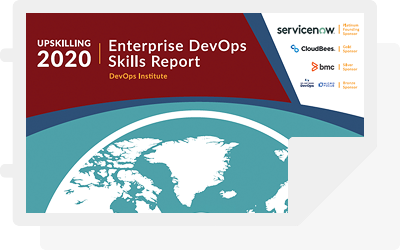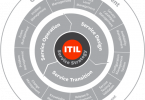In this article, we’ll discuss how site reliability engineering relates with IT operations. Specifically, we’ll see how SRE has emerged as a transformative approach to IT operations, going beyond the DevOps framework.
What is site reliability engineering?
Site reliability engineering (SRE) is a methodology designed to ensure continuous operations of cloud-enabled infrastructure, solutions, and services. An SRE job typically combines engineering or development tasks with IT operations tasks.
There are certainly overlapping components and approaches across IT operations (ITOps), DevOps, and SRE roles. However, all three positions refer to different responsibilities, so therefore each requires a different mindset and approach to realize several common goals associated with IT operations.
SRE starts with many ITOps functions, with a core focus on the improvement and dependability of IT services. Unlike DevOps, SRE has additional objectives that span across the software engineering and IT operations disciplines.
To compare SRE with ITOps, let’s discuss the basic functions of IT operations.
IT Operations explained
IT operations administers the processes and services within your organization’s IT department. ITOps teams are responsible for the monitoring, management, and control of your IT infrastructure to ensure that the IT services are delivered according to organizational policies, requirements, and performance standards. ITOps teams comprise of a range of cross-functional experts, including security, systems, and network engineers.
The responsibilities of your IT operations teams will vary based on the SDLC methodology and ITSM framework your company has adopted. Many organizations have adopted modern SDLC methodologies, such as Agile and DevOps, that include the following key IT operational tasks:
- Uptime and performance. ITOps performs the tasks necessary to keep systems up and running at optimal performance levels. Processes such as migration, updates, configuration changes, and maintenance of the infrastructure may prevent the delivery of an IT service to end users, and it falls to IT operations personnel to reduce the end-user impact of such tasks.
- Configurations management. ITOps ensures consistent system functionality even as necessary configurations are changed, managed, and controlled. An optimal performance of all physical and logical assets is maintained within the IT environment
- Infrastructure management. An infrastructure environment consists of all hardware and software resources underlying an IT service or solution used at the organization. ITOps manages these resources, including the components delivered across cloud environments.
- Evolution of infrastructure. The infrastructure must evolve rapidly in response to changing business and IT requirements. ITOps ensures that the necessary infrastructure management, security, provisioning, and changes continue to align with such organizational requirements.
- Disaster mitigation. ITOps helps devise, maintain, and execute an extensive risk assessment and disaster recovery plan. As a result, the impact of all planned and unplanned downtime is also mitigated.
- IT governance. The use of IT services and solutions must follow organizational protocols and policies under all circumstances. IT operations perform the necessary monitoring and control to align IT service delivery with organizational governance policies.
Of course, ITOps doesn’t have to be limited to IT service delivery. In the context of DevOps SDLC, the development teams rely on strategic IT operations to be successful.
Differences between ITOps and SRE
Google developed SRE to address a key limitation of the DevOps movement. While DevOps provides an abstract overview of the mindset, strategy, and expectations necessary to make a software development project successful, it lacks specific actionable guidelines for DevOps teams to follow.
For example, DevOps encourages teams to accept failure as normal, without formal definition of the terms, ‘failure’ and ‘normal’. On the other hand, SRE provides a quantifiable formula to balance accidents and failures against new release sprints.
SRE teams based their responsibilities, behaviors, and work patterns on the following principles, encompassing them for all ITOps functions:
- Embracing risk. An SRE views IT operations tasks through the lens of risk. In the real world, it’s virtually impossible to ensure 100% reliable IT operations. Organizations, therefore, must follow a balanced tradeoff between the cost and risks associated with the reliability stature of an infrastructure system. The role of SRE is to optimize and manage risk in this context.
- Service level objectives. SREs address the challenges and opportunities associated with service levels associated with an IT service. They do this by evaluating insightful metrics and helping organizations align service level agreements (SLAs) with service levels defined as optimal within the organization.
- Eliminating toil. SREs help eliminate waste processes and automate repetitive tasks to streamline the SDLC and service delivery pipeline. As a result, the operational performance of an IT environment can scale linearly per the changing requirements of the organization.
- Monitoring distributed systems. The role of an SRE is particularly applicable in modern IT-enabled companies that leverage vast and distributed IT environments—including cloud, on-site, and hybrid infrastructure environments. The SRE role is focused on maximizing the opportunities and mitigating risks associated in these infrastructure settings.
- Evolution of automation. SREs follow the automate-everything approach from traditional Agile and DevOps organizations with a strategic approach, especially since automating flawed processes only escalates the negative impact. SREs establish a high-level system design that can operate autonomously. Automation is extended across the domains of infrastructure and configurations management to disaster recovery and risk mitigation.
- Release engineering. SREs treat the release process as an integral component of IT operations. They help build systems and processes in a way that all change emerges as planned outcomes, with minimal risk and disruption to IT operations.
- Simplicity. SREs help reduce instability that may impact infrastructure performance. Simplicity extends across all domains of IT operations as well as the development process. On the other hand, traditional ITOps may evolve into convoluted, complex, and dependable processes with no principled approach for reducing complexity.
To sum up the relationship between SRE and ITOps: SRE is the principled approach teams adopt in order to perform certain IT operations tasks. Most SRE roles are applicable only at mid-size and large enterprises, whereas most, if not all, organizations may adopt IT operations roles with an abstract and inconsistent definition of the underlying responsibilities.
ITOps, SRE, and IT operations management with BMC
For businesses trying to align IT service and operations management with development in order to stay ahead of the competition, it is critical to implement the right strategy, supported by the right tools that meet your company’s needs.
BMC has a large suite of the most innovative ITSM and ITOM products, including the only end-to-end ITSM and ITOM platform: BMC Helix. For more information on how BMC can help you create an autonomous enterprise platform, contact BMC today.






